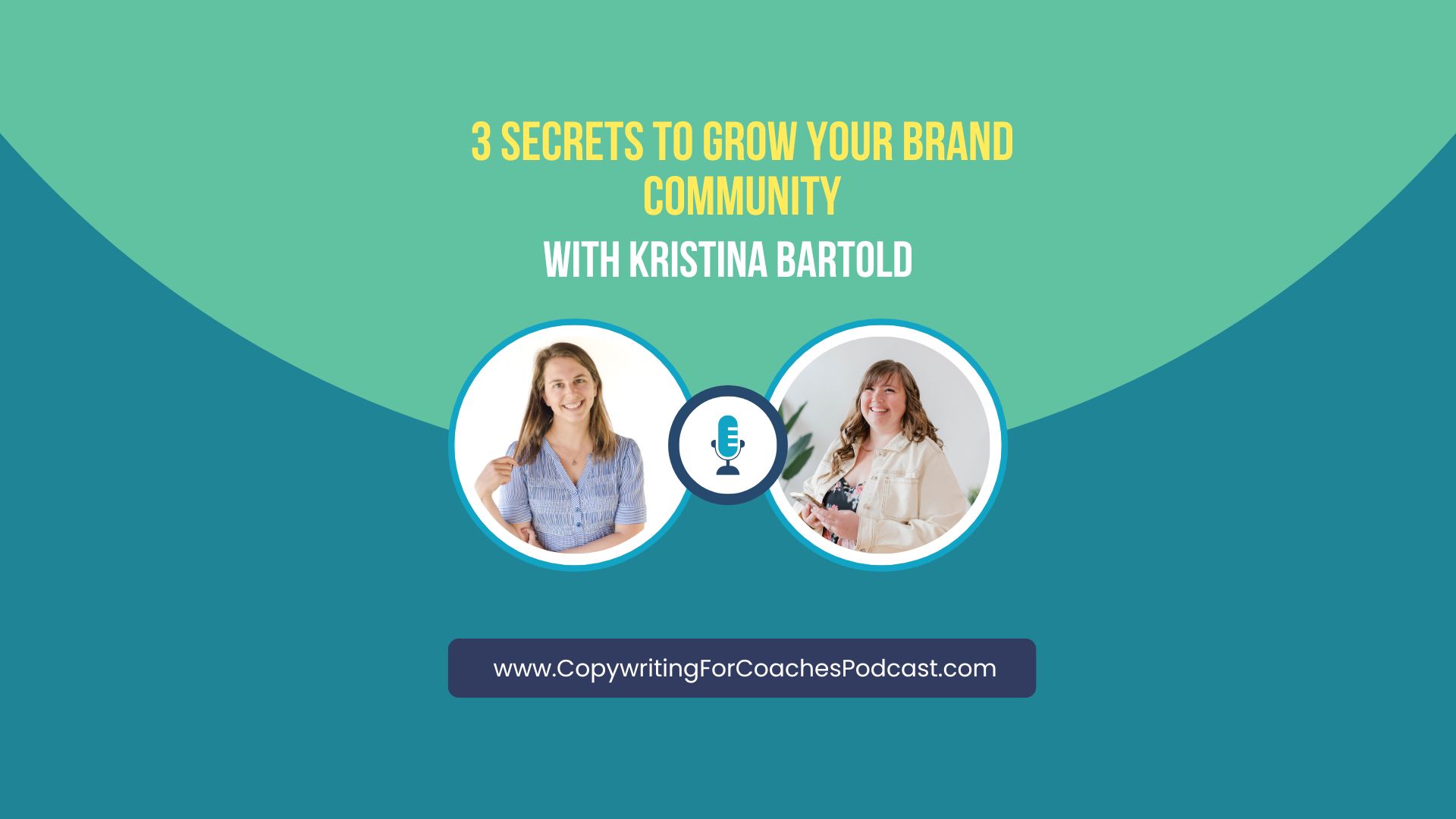Are you overthinking your copywriting, too? I know, I’ve been there. You’re staring at the screen, unsure how to make your words sound like you and make sales for you. The one tool I never expected to help me stop overthinking in my writing…is to use ChatGPT for copywriting.
Now, before you cringe at the thought of AI taking over your voice, let me set the record straight: we are not using ChatGPT to write our final drafts. Nope. What we are doing is harnessing it to enhance our creativity, speed, and process—all while keeping your authentic brand voice intact.
In today’s blog, I’ll walk you through 8 smart ways to use ChatGPT as a tool in your copywriting process. This isn’t about giving up control or sounding robotic. It’s about using technology to make you a better writer.
ChatGPT for Copywriting is a Tool, Not a Replacement
Let’s talk about the reality of using ChatGPT for copywriting. Whether you’re skeptical or already onboard, here’s the truth: ChatGPT is here to stay. Ignoring it means missing out on practical ways it can elevate your writing and your writing process. But if we over-rely on ChatGPT, that’s not good either. But here’s the thing—it’s not about ChatGPT doing the work for you. It’s about how it can support you in becoming a better writer. There’s a big difference.
When we overuse ChatGPT, we risk weakening our creative muscles. Just like our muscles atrophy if we don’t use them, the same is true for our creative muscle and writing muscle. We need to use them to make them stronger. And if we’re outsourcing our thinking to ChatGPT, then we are losing a very human part of ourselves. And as humans trying to connect with other humans in our marketing, that’s important.
Even the act of writing—it changes you. If you identify as a writer, you know that writing does something to you. The act of writing and going through the writing process changes something in me. I would never want to lose that.
Think about it. Journaling does something to you as a person. There is a reason it is used for self-regulation, it’s taught as a coping skill, and it’s seen as a spiritual discipline. Similarly, copywriting does something to you as a business owner. It changes something within you that is essential for the way that you show up in your marketing.
Yes, ChatGPT can write fast, but what are we losing when it writes for us at that rapid speed?
Yes, ChatGPT can write fast, but does it convert?
The good news is that we can train ourselves to write fast. For example, I batch write emails for my own business at an average rate of 10 minutes per email. I’ll share that process in another episode!
Let’s get into the 8 smart ways you can use ChatGPT to write converting copy faster without losing yourself in the process.
8 Smart Ways To Use Chatgpt For Copywriting—While Keeping Your Authentic Brand Voice
Idea Generation
One of my favorite ways to use ChatGPT for copywriting is for brainstorming new content ideas, headlines, or campaign angles. Sometimes, staring at a blank page is the hardest part, right? That’s where ChatGPT comes in.
You can ask it for a huge list of ideas to give your creative process a major boost. It helps you think outside the box and come up with blog post topics, sales email angles, landing page ideas, or even social media caption ideas. You don’t need to rely on just your own brainpower. Instead, you’re using ChatGPT to spark creativity and expand your vision.
2. Outlining
I cannot imagine ever using ChatGPT for a final draft. However, it can be helpful to kickstart your writing when you have a structure to work from. Sometimes, all you need is a starting point, and ChatGPT provides that framework. It can help outline your piece quickly.
Even if you don’t love the outline it creates, that can still move you forward! Seeing what doesn’t work often sparks clarity about what will. Instead of staring at a blank page, you’ll have a rough structure to fill in and refine with your expertise and unique voice.
3. Headline and Hook Variations
When I use ChatGPT for copywriting, one of my favorite tricks is asking for multiple headline or subject line options. You can see what resonates and use it as a base to craft your own. I don’t usually take a single suggestion word-for-word, but I love mixing and matching elements from several options.
For example, I’ll ask for a few variations and then pull out the parts that speak to me. From there, I craft something that aligns perfectly with my message. This method helps you avoid blank-page paralysis, sparking the right idea to create a headline or subject line that’s compelling—without being clickbaity.
4. Editing and Feedback
Paste your copy into ChatGPT and ask for suggestions to improve clarity, tone, or flow. It won’t change your core message, but it might catch something you missed. The good part is that your voice is already there, and it can make suggestions.
Sometimes, I don’t fully agree with it, but every now and then, it surprises me with a great catch of something I didn’t see. Even if you don’t take all its advice, it’s a great tool for polishing your work without losing your unique voice. Think of it as a second set of eyes to help refine what you’ve already created!
5. Audience Research
Ask ChatGPT to summarize common challenges, pain points, or desires of your target audience based on general trends. You can use these insights to make your copy more relevant and targeted.
For all my DFY clients, I create a messaging guide. This guide captures your brand’s voice, your audience’s feedback, and the content you’ve already created. It includes everything from podcasts to blog posts. I analyze how your audience responds, which topics resonate, and where adjustments might be needed. ChatGPT can help streamline this process by summarizing trends and highlighting common themes. ChatGPT also helps deepen our research, ensuring we capture the full picture of your audience’s needs and desires.
This document becomes invaluable for future projects, whether for yourself or if you work with another team member or strategist. It’s not just useful for me as your copywriter—it’s a resource that lives on. With this guide, you’ll have a clear roadmap for maintaining consistency in your messaging. It adds more depth to your target audience and can help you articulate what can sometimes feel hard to express.
6. Tone Adjustments
If you’re experimenting with a different tone or voice, use ChatGPT to rephrase your copy in any desired style. This process acts as a creative guide for refining your revisions.
It’s actually kind of fun and insightful to paste your own copy into ChatGPT. Whether it’s from your website, emails, or anything that feels aligned with your voice…ask ChatGPT to summarize your tone. This can give you a fresh perspective on how you’re showing up.
Sometimes I use this tool when I’m stuck, asking, “What am I trying to say here?” I’ll feed it a snippet of my copy and ask it to say it in my voice. It often hits the mark, helping me see what I couldn’t articulate myself. It’s not perfect every time, but it’s a great starting point.
7. SEO Keyword Research
If you’re looking for quick ideas, ChatGPT can suggest keyword ideas, questions, and search phrases related to your topic. While it doesn’t replace SEO tools like SEMrush or Keywords Everywhere, it’s super helpful for a quick brainstorm.
I use ChatGPT when I need a fast sense of what keywords or phrases I should focus on. It helps me get ideas fast. And trust me, if you’ve ever done SEO research, you know how time-consuming it can be! With ChatGPT, you’ll never run out of content ideas, and you can easily guide your copywriting process.
I love making sure my pillar content is SEO-friendly. Why? Because I want it to work for me for the long term. Time is precious. SEO research maximizes your copy, making sure it doesn’t get lost in the social media algorithm. It’s about creating content that works for you, even years into the future.
This can be a powerful tool for quick keyword brainstorming to set a solid foundation for your content. Keep SEO in mind when planning your next blog or launch.
8. Enhance Value Prop
You can use ChatGPT to craft messaging that stands out in your market. I feed ChatGPT all the key details: the offer, the problem it solves, what it is, who it’s for, and what makes it unique. Then, I ask it to generate ideas that clearly communicate the solution in a way that’s easy to grasp, sets it apart, and fills a gap in the market.
Yes, the prompt is long, but for good reason. To get valuable output from ChatGPT, you need to give it as much context as possible. It saves me time by offering a range of options I can work with, helping me see the big picture without overthinking. (This is one of the biggest copywriting mistakes to avoid!)
This approach is powerful for narrowing down your value proposition—one of the most important elements on any sales page. I see it all the time: the missing piece in offers that don’t convert is a clear, unique value prop. By leveraging ChatGPT for copywriting, you can get a fresh perspective and avoid the pitfall of sounding like everyone else in your space.
But here’s the thing—using ChatGPT isn’t just a shortcut. You still need solid research, industry knowledge, and copywriting skills. That is what turns those ideas into messaging that truly resonates and converts. It’s not about spitting out words for quick wins. It’s about being thoughtful, strategic, and, above all, smart with how you use this tool to make your copy shine.
By using ChatGPT as a support tool for ideation, research, and feedback, you can enhance your copywriting process while maintaining full creative control over your final product.
Conclusion
There you have it, 8 smart ways to use chatgpt for copywriting without getting robot word vomit. As you can see, this is not about giving up your voice or creativity. It’s a tool that helps you brainstorm, refine, and speed up your process—while keeping YOU and your voice at the center of it all.
You can leverage AI for research, ideation, and even editing without losing your unique tone or brand personality. The key is knowing when to use ChatGPT to support your writing, not replace it. If you’d like more support in your copywriting, then I invite you to join Copy Critique Club. In this membership, we’ll sharpen your copy, make it sound like you, and ensure it converts. Imagine having a space to get expert feedback on your writing, so you can confidently put your message out there without second-guessing yourself or overthinking it.




